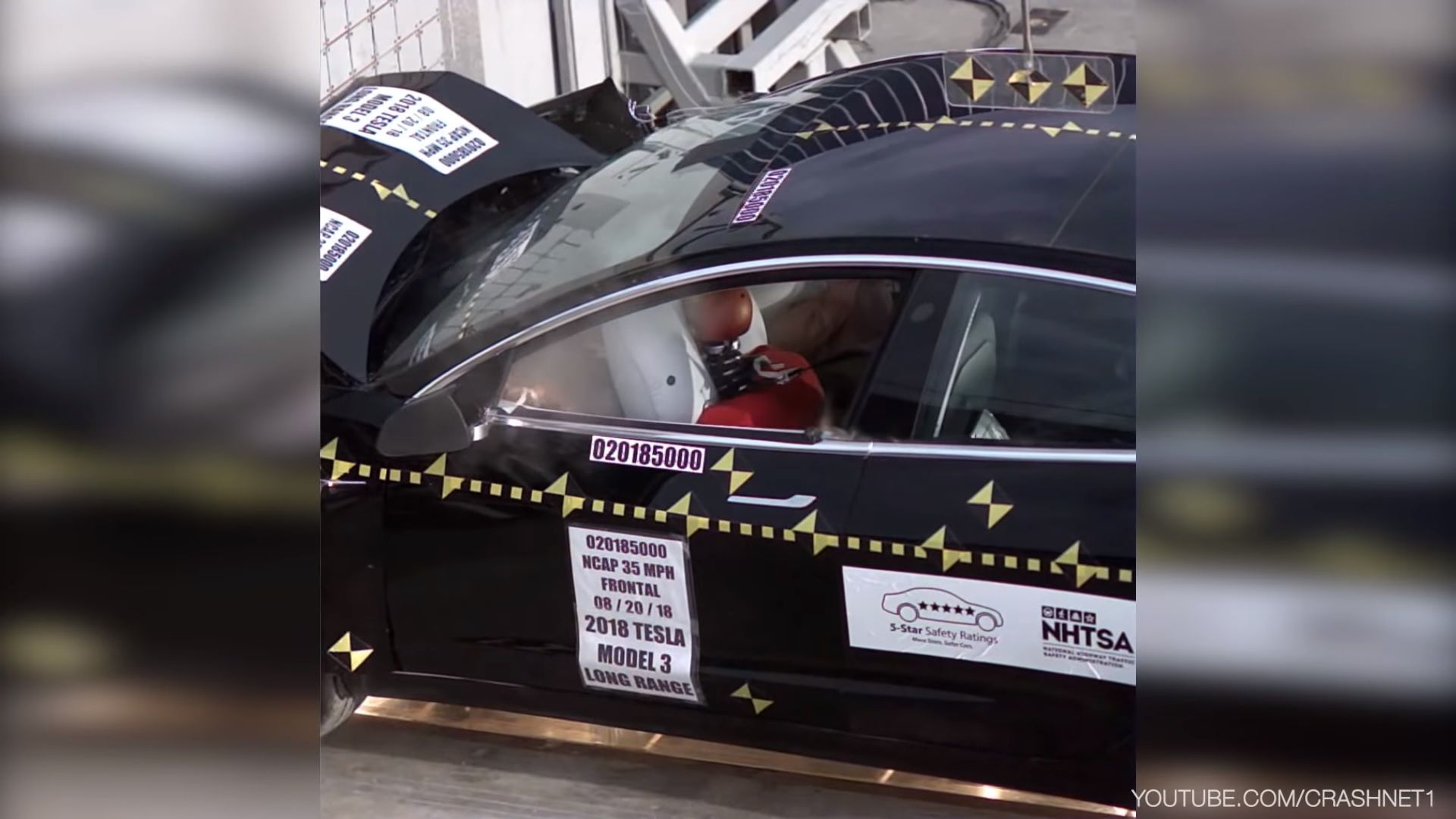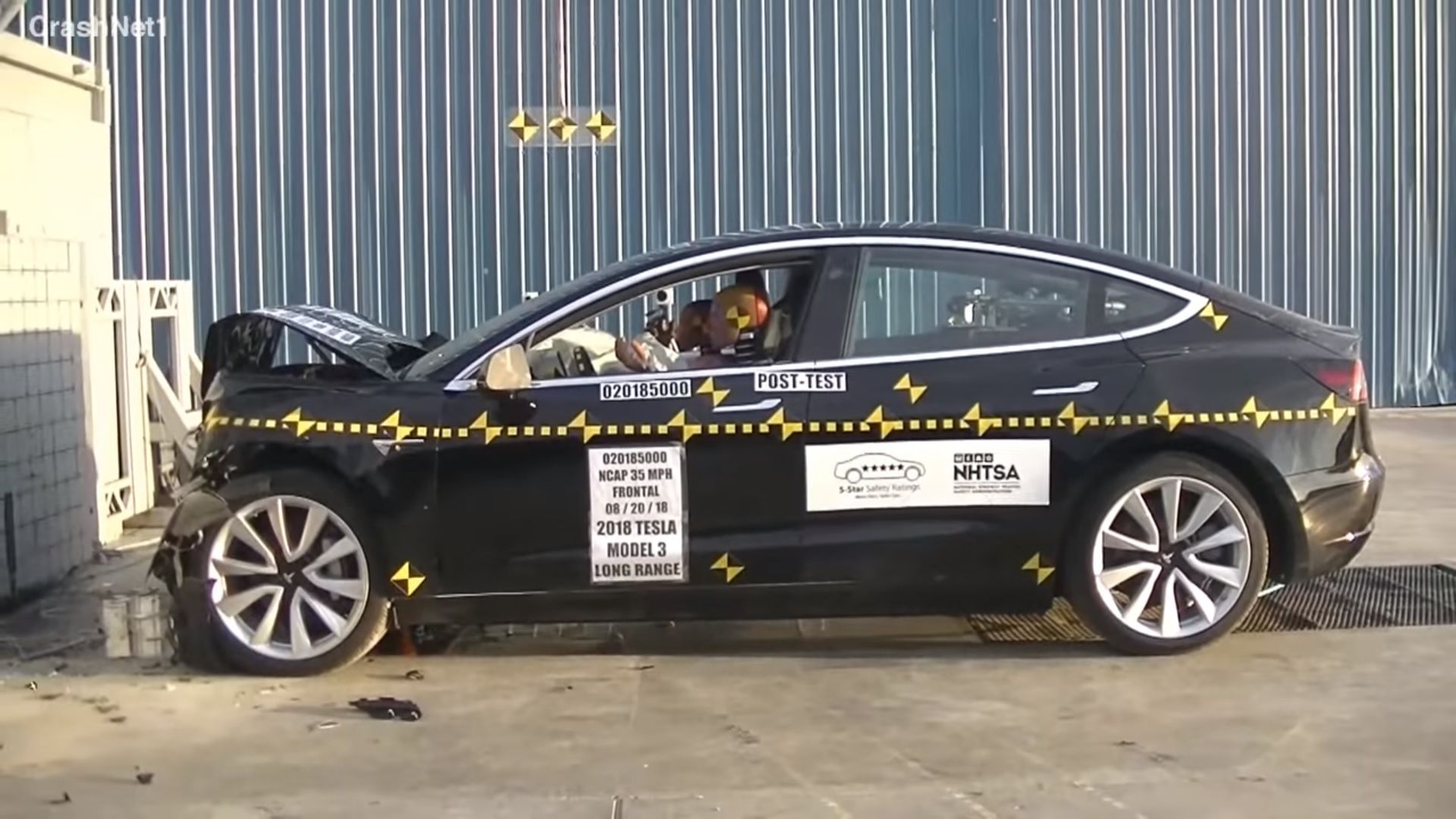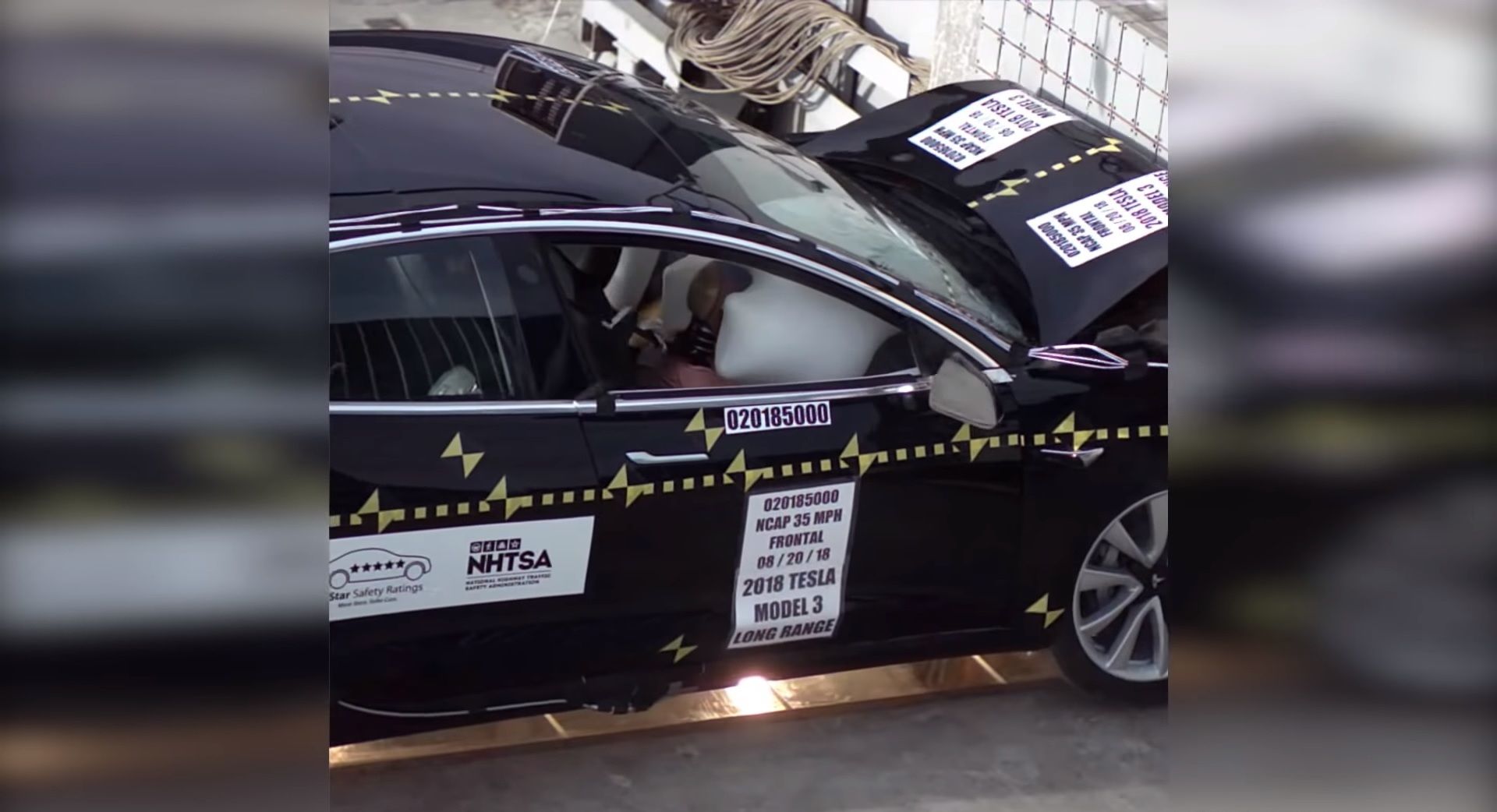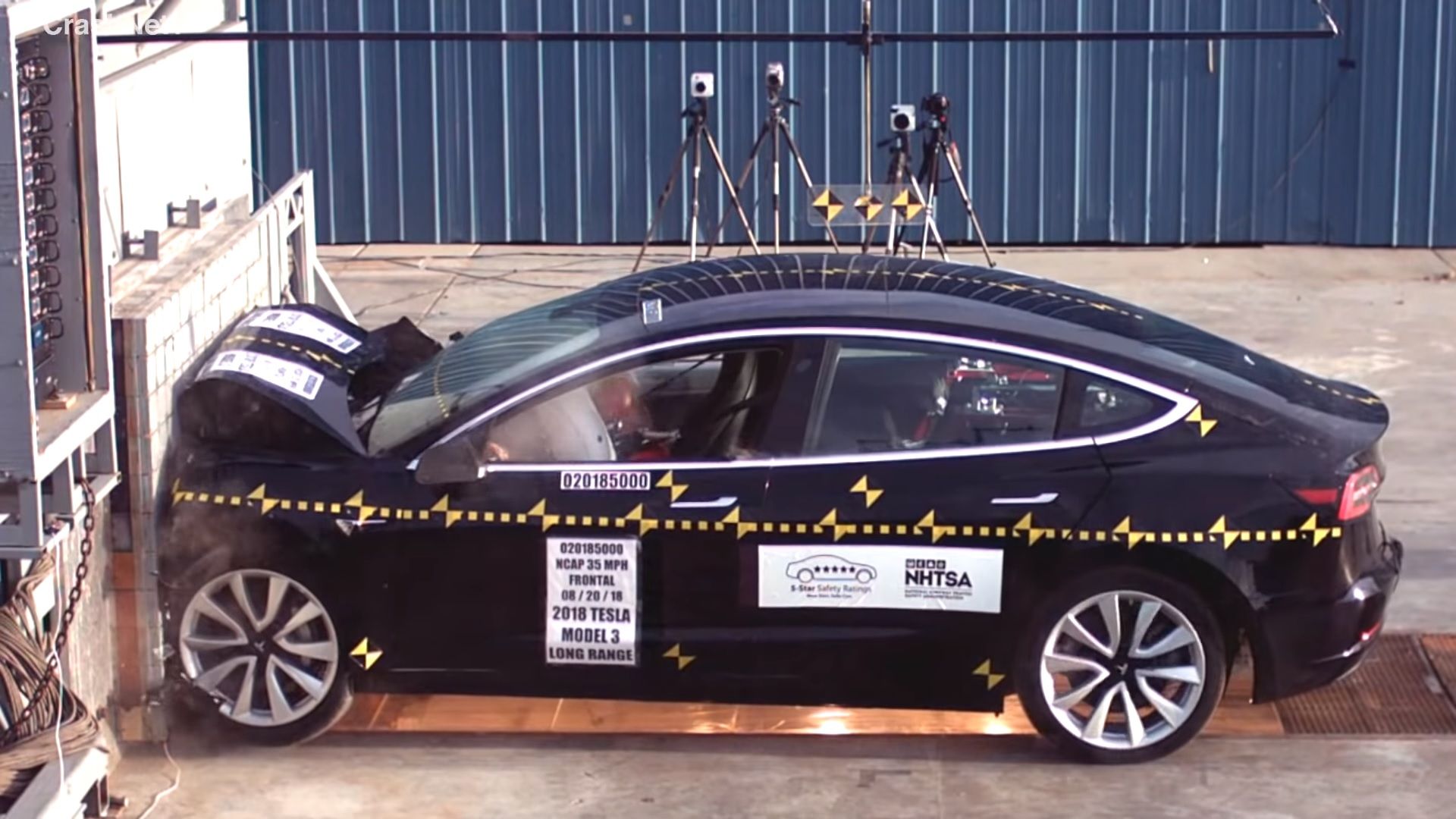Tesla's compact Model 3 sedan is clearly one of the safest cars on the market today, receiving a perfect 5-star safety rating after being tested by the NHTSA. To add to that, Tesla has claimed that the Model 3 scored the lowest probability of injury score ever recorded by the NHTSA.
The Model 3 is fresh off receiving a 5-star rating from the NHTSA after completing the full NCAP tests earlier this year. The smallest Tesla was awarded five stars across the board, including each sub-category, and for standard safety equipment. Now, Tesla posted on their blog that the Model 3 is also the car with the lowest likelihood of injury in case of a crash out of all the cars ever tested by the NTHSA.
Learn more about how safe the Model 3 is and why NHTSA doesn't quite agree with Tesla
Tesla's Model S and Model X are stout when it comes to safety, but the Model 3 (the long-range RWD version) seems to be the safest of the lot. The new electric compact sedan was tested by the NHTSA and received a 5-star rating.
Tesla took the data from NHTSA's website and now claims that their Model 3 is the safest yet when it comes to how likely it is to incur injuries following a crash aboard the car. "The agency’s data shows that vehicle occupants are less likely to get seriously hurt in front, side, and rollover crashes when in a Model 3 than in any other car," said Tesla in a blog post. "NHTSA’s previous tests of Model S and Model X still hold the record for the second and third lowest probabilities of injury, making Tesla vehicles the best ever rated by NHTSA. We expect similar results for other Model 3 variants, including our dual-motor vehicles, when they are rated."
Tesla then went into detail talking about how the Model 3 achieved this result. "In addition to its near 50/50 weight distribution, Model 3 was also designed with an extremely low polar moment of inertia, which means that its heaviest components are located closer to the car’s center of gravity. Even though Model 3 has no engine, its performance is similar to what’s described as a “mid-engine car” due to its centered battery pack (the heaviest component of the car) and the fact that Model 3’s rear motor is placed slightly in front of the rear axle rather than behind it. Not only does this architecture add to the overall agility and handling of the car, but it also improves the capability of stability control by minimizing rotational kinetic energy."
Details of how the car copes with crashing head-on into a pole are also present, the manufacturer stating that "energy-absorbing lateral and diagonal beam structures work to mitigate the impact." Tesla also made sure that small crumple zones on the sides don't take their toll on the Model 3's side protection. "We patented our own pillar structures and side sills to absorb as much energy as possible in a very short distance. These structures work alongside the vehicle’s rigid body and fortified battery architecture to further reduce and prevent compartment intrusion."
Then there's the event of a rollover crash which, although seemingly unlikely, accounts for some 35% of all passenger vehicle deaths over a period of 12 months. As such, Tesla made the Model 3 rigid enough so that "the body structure can withstand roof-crush loads equivalent to more than four times its own weight and with very little structural deformation. NHTSA’s standards only require that cars withstand loads of three times their own weight."
Further reading
Read our full review on the 2018 Tesla Model 3.




